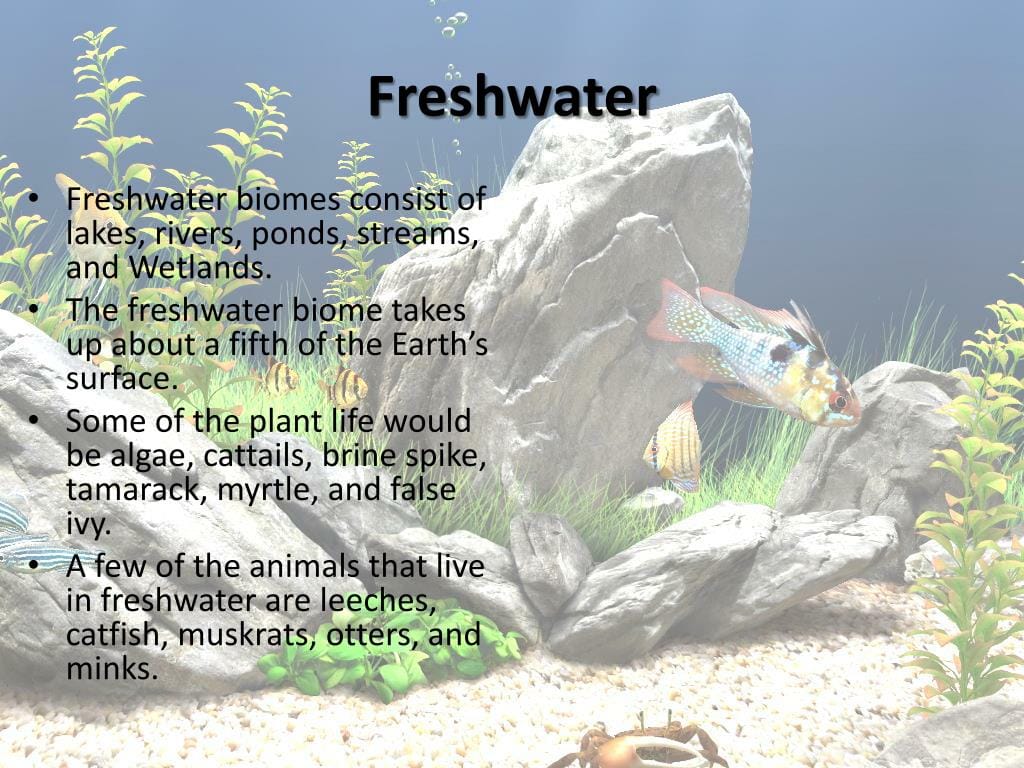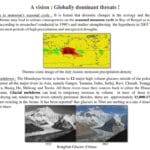Imagine a world where glistening lakes, rushing rivers, and sprawling wetlands are brought to life by the rhythmic pulse of rainfall. Welcome to the freshwater biome, a realm where precipitation plays a starring role in shaping the delicate balance of these aquatic wonders. From the thundering waterfalls that nourish vast wetlands to the gentle sprinkles that replenish hidden mountain lakes, rainfall orchestrates the symphony of life within these vital ecosystems. Join us as we delve into the intricate relationship between rainfall and the freshwater biome, exploring its profound impact on the delicate dance between water and life.
How Much Rain Falls in a Freshwater Biome?
The amount of rainfall in a freshwater biome is as diverse as the ecosystems themselves. While the thought of water-rich environments might conjure images of constant downpours, the reality is far more nuanced. Factors like location, seasonality, and topography intertwine to create a striking tapestry of precipitation patterns.
Wetlands in temperate zones, for example, often enjoy a steady supply of rainfall, while rivers nestled in valleys or clinging to mountainsides may have to adapt to significantly less. The Florida Everglades, a prime example of this variability, experiences a dramatic shift between its summer wet season, where it can receive up to 60 inches of rain, and its drier winter months.
This variation in rainfall is a result of a complex interplay of elements. A biome’s latitude, proximity to the ocean, and altitude all influence the amount of precipitation it receives. Seasonality adds another layer of complexity, with many freshwater biomes experiencing distinct wet and dry periods throughout the year. Topography also plays a crucial role. Mountains, acting as nature’s rainmakers, can create rain shadows, leaving one side lush and green while the other remains significantly drier.
But why should we care about how much rain falls on these freshwater ecosystems? The answer is simple: water is the lifeblood of these precious environments.
These intricate freshwater systems provide a habitat for a stunning array of plants and animals, all reliant on a consistent supply of water to survive. And it’s not just wildlife that benefits—humans depend on freshwater too! Over half of our drinking water, as well as the water we use for our furry companions, originates from these freshwater sources.
However, this vital resource faces a growing threat. Climate change, with its potential to disrupt precipitation patterns globally, could have drastic consequences. Some regions might experience more extreme rainfall and flooding, while others could face prolonged and severe droughts. These shifts could disrupt the delicate balance of freshwater biomes, leading to a loss of biodiversity, water shortages, and even changes in how the entire ecosystem functions.
Unleashing the Deluge: Does it Rain in the Aquatic Biome?
It seems like a simple question: does it rain in the aquatic biome? While the answer might appear obvious, the relationship between rainfall and aquatic environments is surprisingly complex. Both freshwater and marine biomes, while inherently connected to water, experience rainfall’s influence in distinct ways.
Imagine a serene freshwater lake nestled amidst rolling hills. This secluded ecosystem likely relies heavily on direct rainfall to maintain its water levels. Contrast this with the vast expanse of the open ocean, where rain, wind, and powerful currents interact to distribute freshwater far and wide.
These variations in rainfall have a profound impact on the creatures that call these biomes home. Rainwater carries essential nutrients that support the entire food web, from microscopic algae to massive whales. For some species, rain serves as a cue for breeding or migration, signaling shifts in their environment.
However, as with many natural processes, too much of a good thing can be detrimental. Excessive rainfall can lead to overflowing rivers, polluted runoff that harms delicate coral reefs, and disruptions to the delicate balance of aquatic ecosystems.
Climate change further complicates this intricate relationship. Scientists are working diligently to understand how shifts in precipitation patterns, such as more intense downpours or prolonged droughts, will impact aquatic life. Determining which species can adapt to these changes is a critical area of ongoing research.
How Much Water Does a Freshwater Biome Hold?
Quantifying the exact amount of water within a freshwater biome is an elusive task, akin to measuring a puddle during a downpour. Unlike the ocean, which maintains a relatively constant volume of water, freshwater sources like lakes, rivers, and wetlands are constantly influenced by the whims of nature and, increasingly, human activities.
A heavy rainfall can cause a river to swell beyond its banks, while a prolonged drought can shrink a lake to a fraction of its former size. These constant fluctuations make it challenging to assign a definitive number to the amount of water these ecosystems hold. Additionally, the variability in rainfall across different geographical locations adds another layer of complexity. A valley nestled between towering mountains, for instance, will likely receive less rainfall than an open plain.
Despite these challenges, we know that freshwater biomes, while essential to life on Earth, account for a surprisingly small percentage of the planet’s total water—around 0.8%. And even within this tiny fraction, distribution is far from equal. Some regions boast an abundance of freshwater resources, while others face scarcity and drought.
This uneven distribution underscores the critical importance of understanding and protecting these precious ecosystems. They harbor an astonishing diversity of life—over 10% of the world’s known species—and provide us with the freshwater we rely on for survival.
How Much Rain Does the Great Lakes Region Actually Get? (Data & Facts)
The Great Lakes, a majestic chain of freshwater lakes in North America, often evoke images of vast, seemingly endless bodies of water. But have you ever wondered just how much rain sustains these massive ecosystems? The answer, much like the lakes themselves, is anything but simple.
The Great Lakes region experiences a wide range of rainfall, influenced by a complex interplay of factors. This variability is evident in the average annual precipitation, which can range from a modest 10 inches to a plentiful 80 inches across the region.
Several key elements contribute to this dramatic range.
What Makes It Rain (or Not)?
Location, Location, Location: The Great Lakes’ proximity to the Atlantic Ocean and the vast, flat plains of the Midwest plays a crucial role in determining precipitation patterns. These geographic features influence the amount of moisture present in the air, which ultimately translates into rainfall.
Lake Effect Snow: During the colder months, an intriguing phenomenon known as “lake-effect snow” takes center stage. As frigid air passes over the relatively warmer lake waters, it picks up moisture, leading to significant snowfall, particularly along the downwind shores.
Topography’s Influence: The surrounding landscape also plays a role. Mountains and valleys can significantly alter rainfall patterns, creating pockets of higher or lower precipitation.
The Great Moisture Mystery
Recent research from the American Geophysical Union (AGU) has shed light on the primary moisture sources for the Great Lakes region. Surprisingly, it’s not just the vast expanse of the Atlantic Ocean that contributes to the rain and snow. The Great Plains, a region often associated with dryness, plays a significant role in replenishing the Great Lakes’ water supply. This interconnectedness highlights the complex nature of the region’s water cycle.
Climate Change’s Unpredictable Reign
As climate change continues to reshape our planet, its impact on the Great Lakes region’s delicate balance is a growing concern. Scientists predict more frequent and intense storms, as well as increased variability in rainfall, with both droughts and floods becoming more likely. These shifts pose significant challenges to the region’s ecosystems and the communities that depend on them.
Why Rainfall Matters for the Great Lakes
Understanding the intricacies of rainfall in the Great Lakes region is not merely an academic exercise. It is essential for managing water levels, protecting the environment, and ensuring the well-being of both human and ecological communities. By delving deeper into this crucial aspect of the Great Lakes, we can better prepare for the challenges and opportunities that lie ahead.












